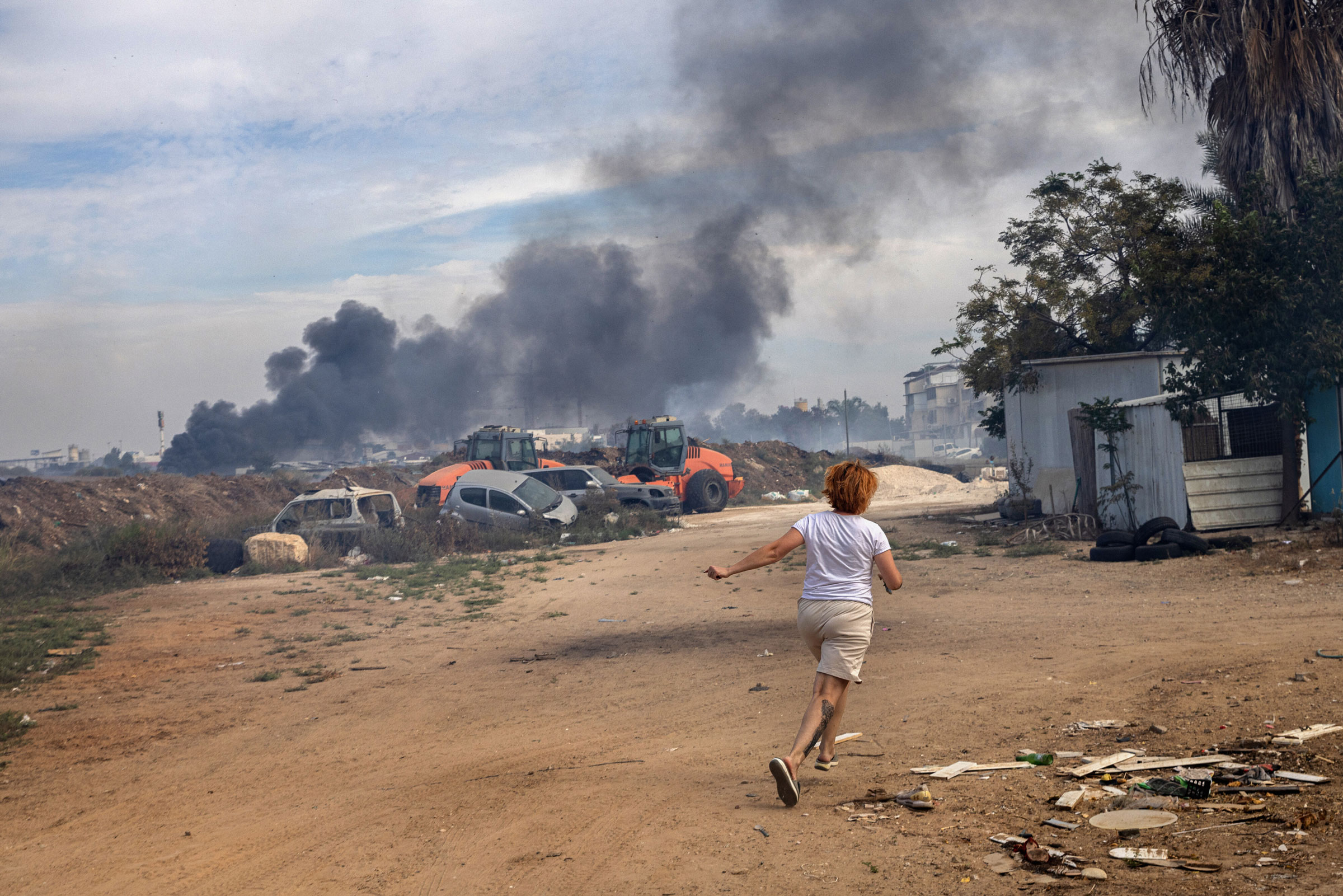
The obvious and intended point of reference for the shattering surprise attack on Israel on Oct. 7 was the 1973 October War, the devastating invasion that Arab armies launched precisely 50 years earlier, plus a day. It was the last time Israelis awoke to a life-changing assault that its intelligence apparatus had not seen coming, and also the last time they found themselves, officially, in a “war.”
Another analogue might be the Tet Offensive, the 1968 Viet Cong surprise attack that changed the course of the Vietnam War. Like the Hamas assault out of the Gaza Strip, it broke out on the morning of a holiday and seemingly everywhere at once; it demonstrated capacities unforeseen in a guerrilla force; it briefly overwhelmed a far superior military; and it produced images that challenged fundamental assumptions about a conflict that had ground on for years.

In Israel, the challenged assumption is that its conflict with the Palestinians can be “managed” rather than solved. Prime Minister Benjamin Netanyahu all but disavowed that assumption as he addressed the camera in the Kirya, the Defense Ministry high-rise in downtown Tel Aviv: the coming conflict meant the country was in “not an operation. Not a round. At war.”
And like the October War and the Tet Offensive, the Hamas raid and its fallout are forcing reconsideration worldwide too, as political and military leaders from Washington to Beijing weigh the possible outcomes of the war. The attack stalls, and perhaps kills, a hoped for peace deal between Israel and Saudi Arabia that depended on the presumed acquiescence of occupied Palestinians to the status quo. It calls into question America’s long-standing hope that it would be able to focus attention away from the Middle East, and it resets a competition between global powers in the region. Once again, the world is finding the near future of geopolitics depends heavily on Israel and the Palestinians.
Brief, lopsided battles with Gaza militants, usually fought by drone or fighter jet, had become so regular that Israeli officials had come to refer to them, in bemused tones, as a homeowner’s routine chores: “cutting the grass,” they would say. Mowing was the most starkly military component of “managing the conflict,” which has been the overarching approach for decades. The strategy assumes that there is no political solution to Jewish Israelis’ contest with the Palestinians, both of whom want the same land. The best that can be done is to contain them.
On the hills of the West Bank, which 3 million Palestinians share with some 500,000 Jewish settlers, much of that management is outsourced to a formidable internal security apparatus that answers to Palestinian National Authority President Mahmoud Abbas. Also known as Abu Mazen, Abbas, now 87, wagered that subduing violent resistance (which, conveniently, also meant subduing Hamas, a rival to Abbas’ Fatah party) would produce negotiations that ended with a Palestinian state. That wager has not paid off.
There are no longer Jewish settlers among the 2.2 million Palestinians crowded into the Gaza Strip. They departed, with the Israeli military, in 2005. For most of the time since, the enclave has been ruled by Hamas, or the Islamic Resistance Movement, and sealed off by Israel. As on the West Bank, Israel controls Gaza’s power supply, telephone systems, and much of its economy, but it has proved harder to manage. Poverty is endemic, and the youthful population has no option to leave. Israeli security has relied heavily on the fences and walls that Hamas guerrillas tunneled under in 2014, and on the morning of Oct. 7 tore down and flew paragliders over.
The scenes that ensued are seared into the souls of Israelis who already possess, along with the most powerful military in the region, a deep reservoir of trauma. In the chaotic morning hours of sabbath, everything was overwhelmed: the Israel Defense Force that forms the core of Israeli society, the Iron Dome missile batteries that ordinarily shield the civilian population, and the almost luxurious sense of security that led hundreds of young people to an overnight rave in the desert where the paragliders landed and opened fire. Some of the terrified young revelers ended up among the estimated 100 hostages, young and old, Israelis and foreign citizens, carried into Gaza as hostages.
Abduction, including of bodies, is a tried and true tactic of the asymmetrical warfare Israel faces, offering bargaining leverage from hit-and-run operations. Like the deaths of civilians, the kidnappings also guaranteed Israel sympathy, and wide latitude to respond; Netanyahu vowed to turn parts of Gaza “to rubble,” though how to do that with dozens of Israeli hostages in the line of fire?
As darkness fell on Oct. 7, Israeli forces were hauling tanks south and, in Gaza, Palestinians’ phones buzzed with texts from the IDF, warning them out of buildings that were about to be bombed. In an instant, Israeli society was no longer torn asunder by Netanyahu’s efforts to sideline the Supreme Court. But the feeling was far from familiar. Some, groping for a reference point, thought not of 1973 or 1968, but 2001. It felt like 9/11. In just moments, a great deal had changed. —With reporting by Solcyre Burga
More Must-Reads from TIME
- Cybersecurity Experts Are Sounding the Alarm on DOGE
- Meet the 2025 Women of the Year
- The Harsh Truth About Disability Inclusion
- Why Do More Young Adults Have Cancer?
- Colman Domingo Leads With Radical Love
- How to Get Better at Doing Things Alone
- Michelle Zauner Stares Down the Darkness
Contact us at letters@time.com